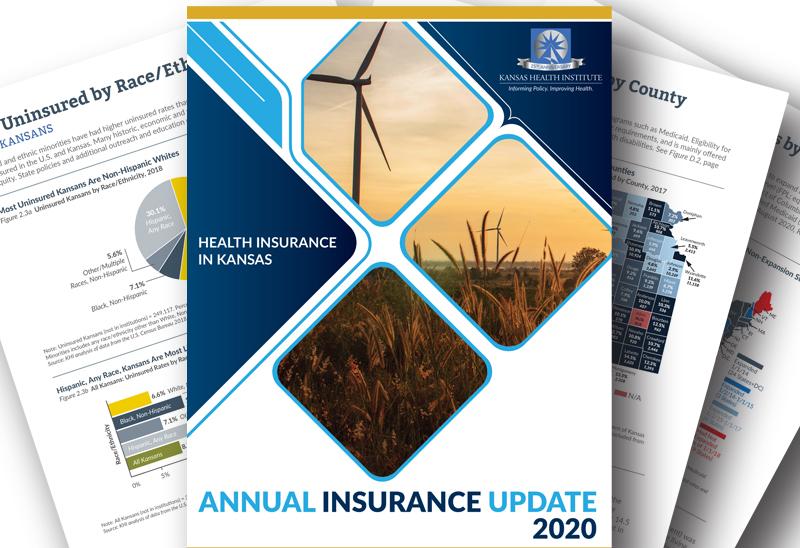In the United States, health insurance coverage is often tied to employment. Before COVID-19 affected the Kansas economy, employment-based insurance was the most common source of coverage. Now, many Kansans have lost their jobs and possibly their health insurance coverage. Understanding the insurance landscape in Kansas prior to COVID-19 might help anticipate what changes in coverage are on the horizon.
Against this backdrop, the Kansas Health Institute has published the Annual Insurance Update 2020: Health Insurance in Kansas, which uses the latest available data (from 2018) to examine health insurance coverage. Besides describing sources of coverage that are available to Kansans, it also includes coverage information for subpopulations of interest, such as racial and ethnic minorities and people living in poverty who are being disproportionately affected by the health and economic consequences of the COVID-19 pandemic.
While COVID-19 is undoubtedly having an impact on insurance coverage in 2020, some important past trends highlighted in the report include:
-
- Almost 6 in 10 (56.3 percent) Kansans obtained their health insurance through an employer in 2018.
- The percentage of Kansans who had direct-purchase insurance — including that purchased on the federally facilitated Kansas marketplace established by the Affordable Care Act (ACA) — was 6.4 percent in 2009, it slowly increased following implementation of the ACA peaking at 8.4 percent in 2016 and has gradually dropped to 6.2 percent in 2018.
- Public coverage increased over the last decade from 23.9 percent in 2009 to 28.8 percent in 2018, while employment-based coverage has remained relatively stable over that time.
- Hispanics, Any Race, were 3.3 times more likely to be uninsured than non-Hispanic Whites (21.7 percent compared to 6.6 percent).
- Kansans with family income below the poverty line were six and a half times more likely to be uninsured than those above 400 percent of the federal poverty level (19.6 percent compared to 3.0 percent).
